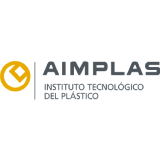Identification codes for plastics
Due to the variety of plastic materials and their different recycling processes, in 1988 the Society of the Plastics Industry (SPI) developed a classification system using plastic identification codes.
What are plastics identification codes used for?
Plastic identification codes are used to identify and separate plastics by resin content and to facilitate sorting and reprocessing at the end of their useful life. In general, the purpose for which the classification system was developed, these symbols, is to:
- To have a consistent sorting system for plastics recycling.
- To focus on plastic packaging.
- To provide a convenient method of identifying the resin content of each plastic.
- To provide codes for each of the six most common types of plastics, and an additional code for plastics that do not fall into any of the above six categories.

Classification of the seven identification codes
The system was created with a symbol that reflects the three steps of the recycling process: collection of materials, recycling and new recycled products. Visually, the coding is shown in the form of a triangle formed by three arrows surrounding numbers from 1 to 7. Known as the Universal Recycling Symbol, it identifies and symbolizes the types of packaging materials and their recyclability.
Code number 1: PET
- PET, also known as Polyethylene Terephthalate, has code number 1. It is the most commonly used plastic in food packaging because it is lightweight, inexpensive and easy to recycle. It is normally used for packaging water and beverages, and also for packaging cooking oil. Once recycled, PET can also be used for car parts, carpets, furniture and sometimes new food packaging. SINTAC has a wide range of non-food contact recycled PET for various applications. In addition, we have been offering recycled PET materials for food contact for several years.
Code number 2: HDPE /PEAD
- PS, which stands for POLYSTYRENE, is a material that is not recommended for food use, as it emits toxins. However, due to its low cost and rigidity, it is frequently used in plastic cutlery, cups and plates, as well as cosmetic packaging. It is a material that is difficult to recycle.
Code number 3: V or PVC
- V and PVC, which stand for VINYL AND POLYVINYL CHLORIDE, have code number 3 and correspond to materials that are not often recycled, and are rarely used in food products as they release various toxins. Their high resistance to acids and their hardness make them commonly used in the manufacture of pipes, detergent bottles, medical equipment, shoe soles and others.
Code number 4: LDPE/PEBD
- LDPE/PEBD or LOW DENSITY POLYETHYLENE of the polyethylene family, is a highly flexible and transparent type of plastic commonly used for bags and pouches of all kinds, as well as in laboratory equipment and containers for frozen products.
Code number 5: PP
- PP (POLYPROPYLENE) is the perfect material for microwaveable packaging, as it is highly resistant and heat-resistant. It is also commonly found in lids and containers for medical and veterinary use. Once the recycling process is complete, it is often found in hairbrushes, trays, battery cables or illuminated signs.
Code number 6: PS
- PS, which stands for POLYSTYRENE, is a material that is not recommended for food use, as it emits toxins. However, due to its low cost and rigidity, it is frequently used in plastic cutlery, cups and plates, as well as cosmetic containers. It is a material that is difficult to recycle.
Code number 7: Other
- Finally, code 7 is for OTHER; that is, it covers a wide range of plastics that are very complex to recycle. This category of plastic is often found in sunglasses and DVDs, although it also applies to some water containers and food packaging.

Conclusion
It can be concluded that the plastic coding system is a useful and simple way of classifying plastics into categories, while providing data for post-consumer management. Plastics in groups 1 to 6 are referred to as commodities and are the most commonly consumed plastics today, while those in category 7 tend to be infrequently used, highly specialized or engineering plastics. Among the categories, some characteristics are quite specific and sometimes common to all of them. Category 1 plastics: Soft, transparent plastics. Category 2 plastics: Soft and opaque plastics. Category 4, 5 and 6 plastics: Temperature resistant and microwaveable.













